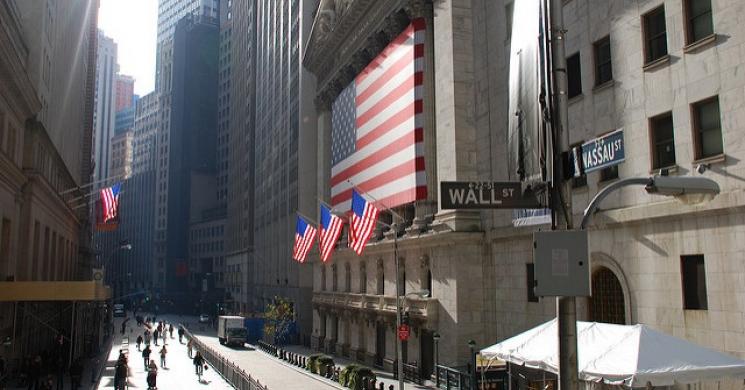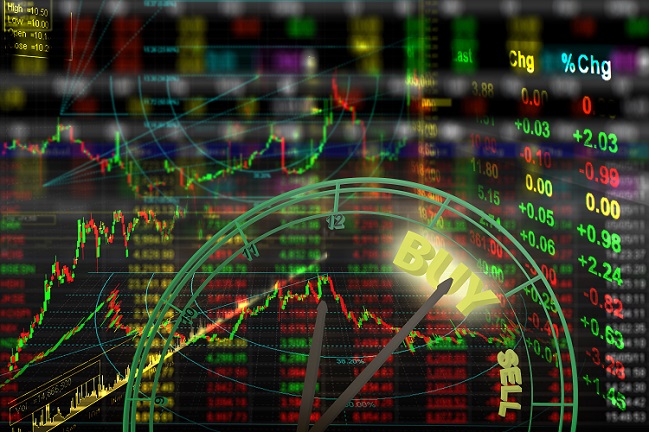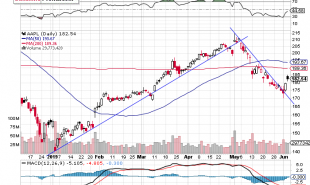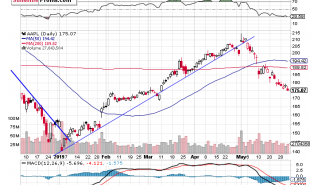
Okay finally, I was able to have a logical debate about manipulation in the marketplace. While I’m still not convinced of the manipulation argument, I do admit that there are some shady practices that can happen. During the weekend, I was talking to one of my friends about my latest commentary that proved the idea of wide-spread gold and silver manipulation is ridiculous – at least the idea of someone dumping $2 billion in paper shorts into the market. We ended up having an interesting debate about manipulation and he pointed out that spoofing is a type of manipulation.
 Not only that but he provided some evidence to back up his theory. We even had a debate without actually insulting each other and calling each other names – if only the internet was as civil...
But I digress.
We ended up talking about the London-based trader Navinder Sarao, who is accused of spoofing markets and causing the May 6, 2010 flash crash, which saw the S&P lose $1 trillion in market cap in a matter of minutes.
U.S. authorities have charged Sarao with 22 criminal offences including wire fraud, commodities fraud, commodity price manipulation and attempted price manipulation. He is currently fighting extradition to the U.S. from London.
In case you don’t remember, I will provide you some details. According to various websites, Sarao is believed to have entered massive sell orders in S&P E-mini futures. He actually, worked with technicians to change his trading platform to create a unique order type “cancel if close to market.”
Apparently this order that he created allowed him to place orders outside the bid/ask spread without the risk of them ever getting filled.
Websites noted that on May 6, the trader put massive orders on the “ask” side, convincing an already fragile marketplace that there were some major sellers. At one point in the day, this trader was responsible for 29% of all the sell orders. Traders eventually started to front run the large orders, selling their contracts, which drove down the price.
After the price fell, the trader placed buy orders and, once those orders were filled, he removed his spoof orders, bringing some normalcy back to the market, pushing the price higher. He ended up earning almost a million dollars in a matter of minutes.
After having this debate, I wanted to learn a little bit more about spoofing and found an interesting research report from a professor of finance at the International University of Monaco.
He talks about how Sarao’s “cancel if close to Market” order was totally predatory and was only used to try and manipulate prices; however, he doesn’t see this as a consistent way of making profits.
“Affirmatively, the market makers on the bid side might occasionally withdraw their bids when they notice a large overhanging order to sell, until some clarity appears. However, if these large overhanging orders are consistently canceled, the market makers are likely to learn to ignore such orders as ‘market spoofing.’ In fact, many traders acknowledge that so-called ‘market spoofing’ regularly occurs even if physical trading pits, and are normally ignored,” the professor said in his report.
So yes, spoofing is a way traders can manipulate markets; however, I don’t think it can cause wide-spread manipulation and doesn’t fit with the conspiracy theory that involves the major banks trying to suppress the gold price.
First off, of the 12 dozen firms that have been charged with spoofing, none of them are major banks. In fact, the biggest example was from a guy who traded in his basement. So this type of activity can happen at any time and be done by anyone.
In fact, big banks are less likely to spoof because this is highly illegal and most compliance departments would not allow this sort of trackable activity.
Second, there is still no clear evidence that spoofing actually worked. Sarao was arrested five years after he allegedly caused the flash crash. During that time, he never changed his trading style and yet there has only been one major flash crash.
If this actually worked wouldn’t we have seen a lot more crashes? I think market makers are now starting to ignore these large orders and spoofing is becoming less effective.
Now lets go back five years ago, Sarao’s actions probably didn’t help things but it was probably a perfect storm of events rather than just the actions of one person. In society, we always like to point to the final straw that broke the camel’s back and not the already established burden.
While, the major example of spoofing is on the “ask” side, it can easily take place on the upside. Someone can put major orders on the buy side to convince traders to front run a major order, driving the price higher.
However, in the manipulation camp, we never hear people crying foul when prices rally 3% or 5% during the day, they see this as a normal function of the market; however, we hear no end of the manipulation cry when prices go down 2%.
Of course, spoofing is just the tip of the iceberg when it comes to illegal market activity. Things like insider trading, illegal boiler room promoting, Ponzi schemes, are all ways people can manipulate markets but that doesn’t mean it is happening all the time.
Not only that but he provided some evidence to back up his theory. We even had a debate without actually insulting each other and calling each other names – if only the internet was as civil...
But I digress.
We ended up talking about the London-based trader Navinder Sarao, who is accused of spoofing markets and causing the May 6, 2010 flash crash, which saw the S&P lose $1 trillion in market cap in a matter of minutes.
U.S. authorities have charged Sarao with 22 criminal offences including wire fraud, commodities fraud, commodity price manipulation and attempted price manipulation. He is currently fighting extradition to the U.S. from London.
In case you don’t remember, I will provide you some details. According to various websites, Sarao is believed to have entered massive sell orders in S&P E-mini futures. He actually, worked with technicians to change his trading platform to create a unique order type “cancel if close to market.”
Apparently this order that he created allowed him to place orders outside the bid/ask spread without the risk of them ever getting filled.
Websites noted that on May 6, the trader put massive orders on the “ask” side, convincing an already fragile marketplace that there were some major sellers. At one point in the day, this trader was responsible for 29% of all the sell orders. Traders eventually started to front run the large orders, selling their contracts, which drove down the price.
After the price fell, the trader placed buy orders and, once those orders were filled, he removed his spoof orders, bringing some normalcy back to the market, pushing the price higher. He ended up earning almost a million dollars in a matter of minutes.
After having this debate, I wanted to learn a little bit more about spoofing and found an interesting research report from a professor of finance at the International University of Monaco.
He talks about how Sarao’s “cancel if close to Market” order was totally predatory and was only used to try and manipulate prices; however, he doesn’t see this as a consistent way of making profits.
“Affirmatively, the market makers on the bid side might occasionally withdraw their bids when they notice a large overhanging order to sell, until some clarity appears. However, if these large overhanging orders are consistently canceled, the market makers are likely to learn to ignore such orders as ‘market spoofing.’ In fact, many traders acknowledge that so-called ‘market spoofing’ regularly occurs even if physical trading pits, and are normally ignored,” the professor said in his report.
So yes, spoofing is a way traders can manipulate markets; however, I don’t think it can cause wide-spread manipulation and doesn’t fit with the conspiracy theory that involves the major banks trying to suppress the gold price.
First off, of the 12 dozen firms that have been charged with spoofing, none of them are major banks. In fact, the biggest example was from a guy who traded in his basement. So this type of activity can happen at any time and be done by anyone.
In fact, big banks are less likely to spoof because this is highly illegal and most compliance departments would not allow this sort of trackable activity.
Second, there is still no clear evidence that spoofing actually worked. Sarao was arrested five years after he allegedly caused the flash crash. During that time, he never changed his trading style and yet there has only been one major flash crash.
If this actually worked wouldn’t we have seen a lot more crashes? I think market makers are now starting to ignore these large orders and spoofing is becoming less effective.
Now lets go back five years ago, Sarao’s actions probably didn’t help things but it was probably a perfect storm of events rather than just the actions of one person. In society, we always like to point to the final straw that broke the camel’s back and not the already established burden.
While, the major example of spoofing is on the “ask” side, it can easily take place on the upside. Someone can put major orders on the buy side to convince traders to front run a major order, driving the price higher.
However, in the manipulation camp, we never hear people crying foul when prices rally 3% or 5% during the day, they see this as a normal function of the market; however, we hear no end of the manipulation cry when prices go down 2%.
Of course, spoofing is just the tip of the iceberg when it comes to illegal market activity. Things like insider trading, illegal boiler room promoting, Ponzi schemes, are all ways people can manipulate markets but that doesn’t mean it is happening all the time.
Cover image courtesy of David Cover
Read more by Just_another_wiseguy







